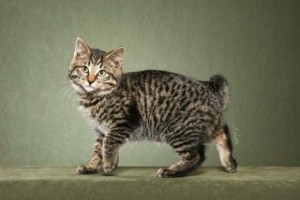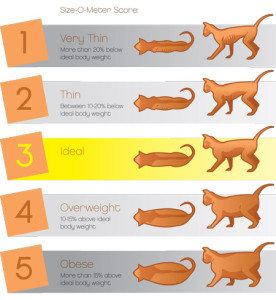
Bobtail Cat – note the short tail
Recently, I received a question from a new reader:
Q: I know of a bobtail cat that is constantly annoying me and is just begging to be eaten. Given that it’s lacking a tail, does that affect anything? Cooking times? Any special instructions?
A: The general rule with regards to the tenderness of kitty meat is to observe their tail length! It may seem strange or bizarre at first that there is such a correlation, but the reason is simple. A kitty’s tail helps to stabilize its movements and provides a counterbalance mechanism so that its center of gravity is stable. Bobcats have either a very short tail or no tail at all, which means that they have to make up for their balancing abilities in other ways. Thus, bobcats use their stabilizing muscles in their core and their legs much more than those of long-tailed cats. Unfortunately, this means that bobcat meat is a little tougher than that of other cats. See the science behind this in the article: What Makes Meat Juicy and Tender?
Not all is lost, though; bobcats can definitely still be made tender and delicious. One way is to slow cook the meat. Much like beef chuck or other cuts that are mostly tough muscle, you can use slow, moist cooking methods (e.g., stewing or braising) to break down the tough connective tissue (called “collagen”) and convert the collagen into gelatin. I will be posting a recipe for this soon.
A second way to deal with tough meat is to massage the cat on a regular basis! Bobtail cats and other short-tailed cats must constantly be activating their stabilizing muscles to balance themselves as they move. Thus, they appreciate long massages to soothe their sore muscles, just like you and I. This also has the effect of breaking down collagen so their meat is more tender. You may liken this to the massaging of Kobe beef cows which command a high price due to their tenderness and succulence. Although the massaging of Kobe beef is actually a commonly-held myth (what farmer has the time to massage each cow in a herd of hundreds??), the principle is still the same and holds true for cows and kitties.
So go massage your bobtail kitties! They love it and this way you can feel a more personal connection to your dish at mealtime! I hope this was helpful! Happy eating!



